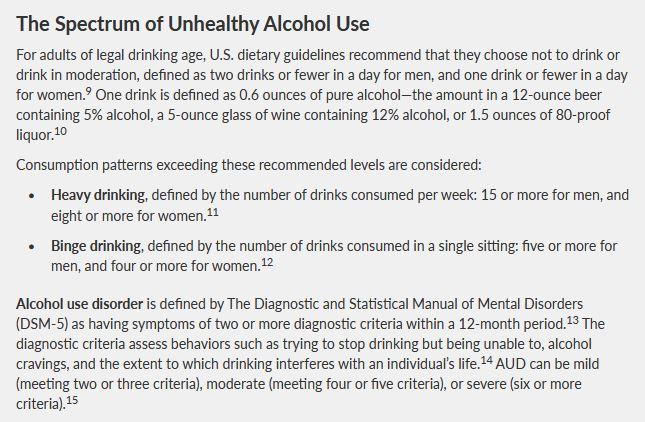
Caption
Alcohol is the leading driver of substance use-related fatalities in America: Each year, frequent or excessive drinking causes approximately 178,000 deaths, according to The Pew Charitable Trusts.
Credit: File photo
|Updated: January 3, 2025 4:24 PM
LISTEN: The Pew Research Center’s newest fact sheet says the biggest drug problem in America is excessive alcohol use. GPB’s Ellen Eldridge has more.

Alcohol is the leading driver of substance use-related fatalities in America: Each year, frequent or excessive drinking causes approximately 178,000 deaths, according to The Pew Charitable Trusts.
Drinking is so normalized that people don't realize they’re drinking an unhealthy amount, especially during times of celebration, Frances McGaffey, associate manager for research on PEW's substance use prevention and treatment initiative, said.
COVID-19-related stressors, including social isolation, led to a 26% increase in alcohol-related deaths during the first year of the pandemic, and alcohol is now the leading driver of substance use-related fatalities nationwide, according to the newly released fact sheet from the Pew Charitable Trusts.
"The big picture is we have a public health crisis in this country that we have not been addressing, and that's unhealthy alcohol use and alcohol use disorder," McGaffey said. "178,000 people a year die from alcohol-related causes, and those deaths are preventable."
While the United States dietary guidelines recommend in general not to drink, McGaffey said that if you are going to drink at all, do it in moderation.
Studies show that cutting back on alcohol even temporarily can help improve sleep quality, skin health and weight loss.

Fatal alcohol-related poisonings, car crashes and suicides are the worst outcomes of excessive drinking, McGaffey said, but alcohol misuse can lead to certain cancers, liver and heart disease, and mental health problems.
Almost half (45%) of the survey respondents who reported drinking in the last month said they binged on booze — drinking four to five drinks at a time, she said.
Some people also have an alcohol use disorder (AUD), which is diagnosed by looking for a variety of criteria including the extent to which alcohol is negatively affecting someone's life, and whether they've tried to cut back without success.
AUD is defined as a treatable, chronic health condition characterized by a person’s inability to reduce or quit drinking despite negative social, professional, or health effects.
One strategy to address alcohol misuse is through teaching medical professionals to ask patients about their substance use using proven, effective screenings.
But that's not enough, McGaffey said.
What's missing is the effort to connect people with care or simply talk to them about their unhealthy alcohol use when there is a positive screen, she said.
"Too often, we have a one-size-fits-all approach and think everyone should go to detox, residential treatment and Alcoholics Anonymous (AA) — and that pathway absolutely works for a lot of people," she said. "It just simply doesn't work for everybody."
Behavioral therapies such as cognitive behavioral therapy and three medications approved by the Food and Drug Administration — naltrexone, acamprosate and disulfiram — can help with drinking.
Naltrexone is often used by people who don't want to stop drinking entirely, but want to cut back and need some help in doing that. Of course, it can also be used to help support abstinence, McGaffey said.
Acamprosate can really help with a down and depressed feeling that people sometimes experience when they stop drinking. So by addressing those symptoms, it can help people not return to drinking.
Disulfiram has been around for a long time and it works by deterring drinking. Basically, if you drink while taking this medication, you get extremely ill with vomiting and other unpleasant symptoms.
The bottom line is that alcohol use disorder often goes unrecognized or unaddressed, but there are evidence-based screening and treatment approaches that can help people recover and save lives, McGaffey said.